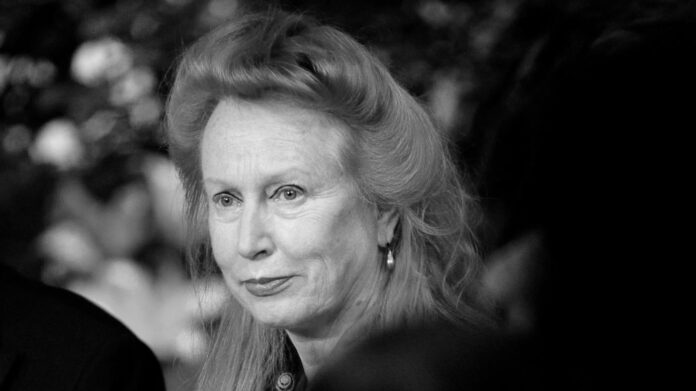
What was Rebecca Horn actually not? In recognition of her epic work and her early contributions to feminist art, the answer remains.
Throughout her life, the sculptor, action artist and filmmaker ventured into the border areas of various artistic disciplines in her performances, with her kinetic art and in her sculptural spatial installations, which she filled with poetic texts and drawings. Her often delicate and fragile works also tell of the fragility of her own life, which she spent the last almost ten years in a wheelchair after a stroke. When I last saw her, she played down the situation with her own dry humor from the Odenwald district in southern Hesse. As always, actually, in order to be able to bear her own pain.
At a young age, during a one-year stay in hospital and sanatorium, Heidemarie Rebecca Horn, born in 1944, was forced to confront her own body. During her art studies at the Hamburg Academy of Fine Arts (HFBK) in the late 1960s, she had previously damaged her lungs while working with polyester and fiberglass and was forced to abandon her plans for her sculptures. This was to be her personal awakening for subsequent forays into the emerging body and performance art. Since then, her work has always been characterized by a reduction to the essentials, and has always been determined by the fact that the artist, despite all modesty, was searching for clarity in classical expression.
Works such as predetermined breaking points
Just like her own life, Rebecca Horn staged the material of her art in a contrasting way. Hard against soft, man against woman, steel against feathers: an eternal poetic game in which, as in her kinetic butterfly objects, brutality was always present. As in her dancing, floating violins, in which the viewer is put into a state of poetry, preparing for the moment when the page breaks. These works became like predetermined breaking points. But they always also told of the artist’s experiences and her eventful life full of melancholy.
When I visited her in her studio in 2006 before her retrospective at the Martin-Gropius-Bau, she had just finished her new work “The Universe in a Pearl”, an 18-metre-high, moving mirror sculpture to, as she said, “keep the blue of the sky and the depth of the ocean suspended” and to allow “people to become a tiny part of a birth scene”. She had Heyden Chisholms set one of her poems to music for the installation made of golden funnels and mirror surfaces. She was interested in the cosmic. But above all in the role of people and their physicality in the bigger picture.
Even in her first sketches, she developed body sculptures and devices that were intended to be used to increase sensitivity to one’s own body, as in her most important work “Unicorn” (1970), or later “The Dancer” (1978). With her installation “Peacock Machine” at the seventh Documenta in 1982, she countered the heavy art world dominated by Beuys with his basalt steles under 7000 oaks with something light, and nonchalantly gave the male-dominated world of those days the cold shoulder.
People liked her wit, as in her work “Painting Machine” from 1988, in which she made fun of abstract expressionism at a time when Informel was fading away. And so she was invited to Kassel four times for the Documenta. She was represented twice at the Venice Biennale. Her art always had entertainment value, and its social relevance struck those affected to the core.
She exhibited for the first time at the Documenta in 1972, as the youngest participant at the time. Her influences during these years came from a lively Fluxus and performance art scene in New York between 1972 and 1981. From there she moved to Paris, later teaching at the California Art Institute of the University of San Diego and from 1989 at the Berlin University of the Arts.
The worldwide popularity of Rebecca Horn’s art was ultimately manifested in international exhibitions at important institutions from Rio de Janeiro to Moscow, as well as in art biennials. After her first art prize from the Glockengasse in Cologne (1977), she was recently showered with international honours: Praemium Imperiale (2010), Grande Médaille des Arts Plastiques, Académie d’Architecture de Paris (2011). She was a member of the Order Pour le Mérite for Sciences and Arts, and in 2017 she received the Wilhelm Lehmbruck Prize.
After her stroke, she returned to her homeland and devoted herself primarily to her foundation, the Moontower Foundation, which recently entered into a cooperation with the State of Hesse and the Museum Wiesbaden for 30 large-scale installations as well as 30 paintings and drawings from all of Rebecca Horn’s major work cycles as permanent loans.
Rebecca Horn died last Friday at the age of 80.
The author Sebastian C. Strenger works internationally as a curator and has been a companion for 20 years.
